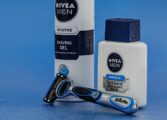Full Coverage Foundation: A Comprehensive Guide for Makeup Enthusiasts

Introduction to Full Coverage Foundation
Full coverage foundation is a popular cosmetic product used to achieve a flawless complexion. It is a type of foundation that provides maximum coverage, effectively concealing any imperfections, including blemishes, scars, and uneven skin tone. Unlike sheer or medium coverage foundations, full coverage foundation is specifically designed to create a smooth and even base for makeup application.
Types and Popularity of Full Coverage Foundation

There are several types of full coverage foundation available in the market, catering to different skin types and preferences. These include liquid foundations, cream foundations, powder foundations, and stick foundations. Each type offers unique benefits and finishes, allowing individuals to choose the most suitable formula for their skin.
Liquid foundations are the most popular choice among makeup enthusiasts due to their ability to blend seamlessly into the skin, providing a natural-looking finish. Cream foundations, on the other hand, are ideal for dry or mature skin as they offer additional hydration. Powder foundations are often preferred by those with oily skin, as they help absorb excess oil and provide a matte finish. Stick foundations are convenient for on-the-go touch-ups and are typically used to conceal specific areas rather than for full-face coverage.
In terms of popularity, some of the well-known full coverage foundation brands include Estée Lauder Double Wear Stay-in-Place Foundation, NARS Natural Radiant Longwear Foundation, and Fenty Beauty Pro Filt’r Soft Matte Longwear Foundation. These products have gained a loyal following for their ability to provide excellent coverage while still looking natural and long-lasting.
Quantitative Measurements of Full Coverage Foundation
When it comes to full coverage foundation, there are a few quantitative measurements that consumers can consider. One such measurement is the shade range offered by a brand. A wide shade range ensures that individuals of all skin tones can find an appropriate match. Additionally, the longevity of the foundation, often indicated in hours, is another quantitative factor to consider. Long-wearing foundations are highly sought after as they provide coverage that lasts throughout the day.
Another quantitative aspect to consider is the level of coverage provided by the foundation. While all full coverage foundations aim to provide maximum coverage, some may have a heavier consistency and offer more coverage than others. This can be measured in terms of how well the foundation conceals imperfections, such as redness or acne scars, and evens out the skin tone.
Differentiating Factors of Full Coverage Foundation
Although full coverage foundations share the common goal of providing maximum coverage, there are several factors that differentiate them from one another. One key factor is the formulation of the foundation. Some foundations are oil-based, while others are water-based. The formulation can affect how the foundation feels on the skin and how well it adheres to different skin types.
Texture and finish are also important differentiating factors. Full coverage foundations can have a matte finish, leaving the skin looking velvety and shine-free, or a dewy finish, providing a luminous and healthy glow. Some foundations also offer a satin finish, which strikes a balance between matte and dewy.
Additionally, the level of buildability is another distinguishing factor. Some foundations allow for multiple layers to be applied, without looking cakey or heavy. This versatility allows individuals to customize their coverage according to their preferences.
Historical Overview of Pros and Cons of Full Coverage Foundation
Over the years, full coverage foundation has evolved, and its pros and cons have changed with advancements in cosmetic technology. Initially, full coverage foundations were notorious for their heavy and cakey texture, often leaving the skin looking unnatural. However, with innovations in formulation and ingredients, modern full coverage foundations now offer lightweight and breathable formulas that still provide ample coverage.
One of the main advantages of full coverage foundation is its ability to effectively cover imperfections, allowing individuals to achieve a flawless complexion. Furthermore, many full coverage foundations now come with built-in skincare benefits, such as SPF protection and hydration, making them multifunctional products. Additionally, full coverage foundation can help individuals with skin conditions or scarring gain confidence and feel more comfortable in their own skin.
However, it is important to note that full coverage foundation may not be suitable for everyone. Individuals with dry or mature skin may find full coverage foundations to be too heavy and settle into fine lines and wrinkles. Furthermore, some full coverage foundations can be challenging to remove and may require additional effort in the cleansing process.
In conclusion, full coverage foundation is a powerful tool in achieving a flawless complexion. With a wide range of options available in the market, individuals can choose a formula that suits their skin type and preferences. By understanding the quantitative measurements, differentiating factors, and historical pros and cons of full coverage foundation, makeup enthusiasts can make informed decisions when selecting their ideal product. So go ahead, embrace the power of full coverage foundation and achieve the confidence that comes with a flawless face.
















































